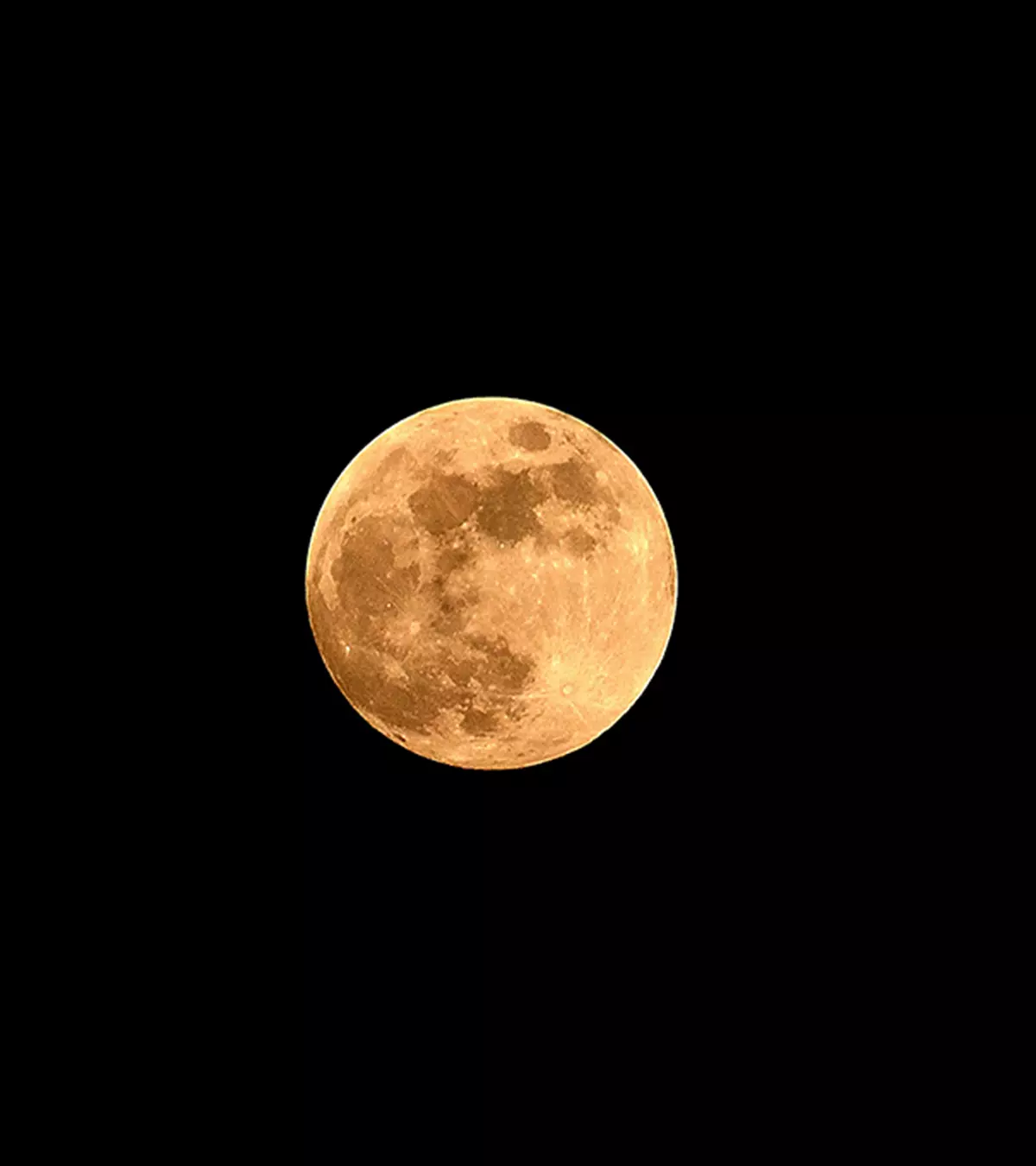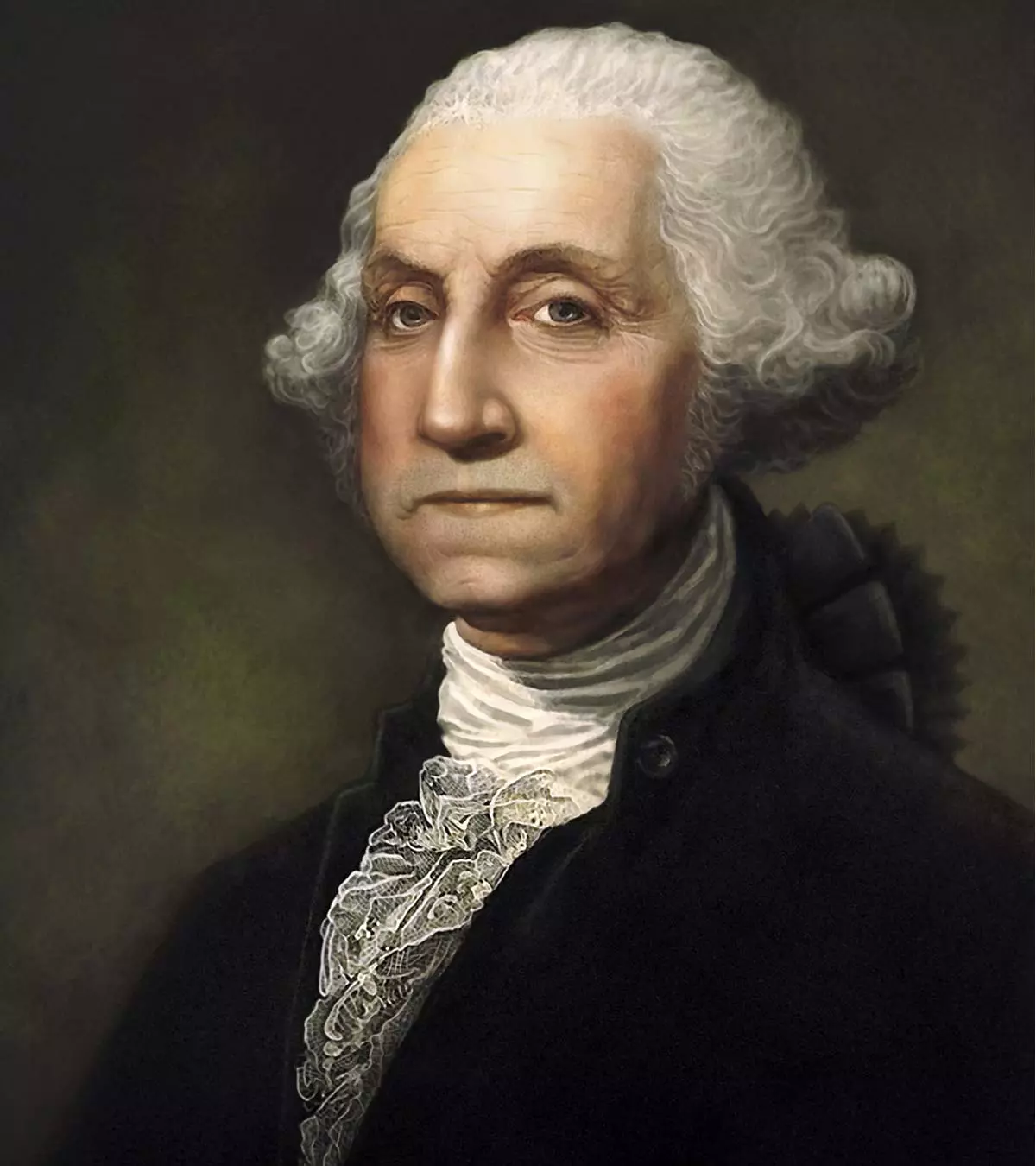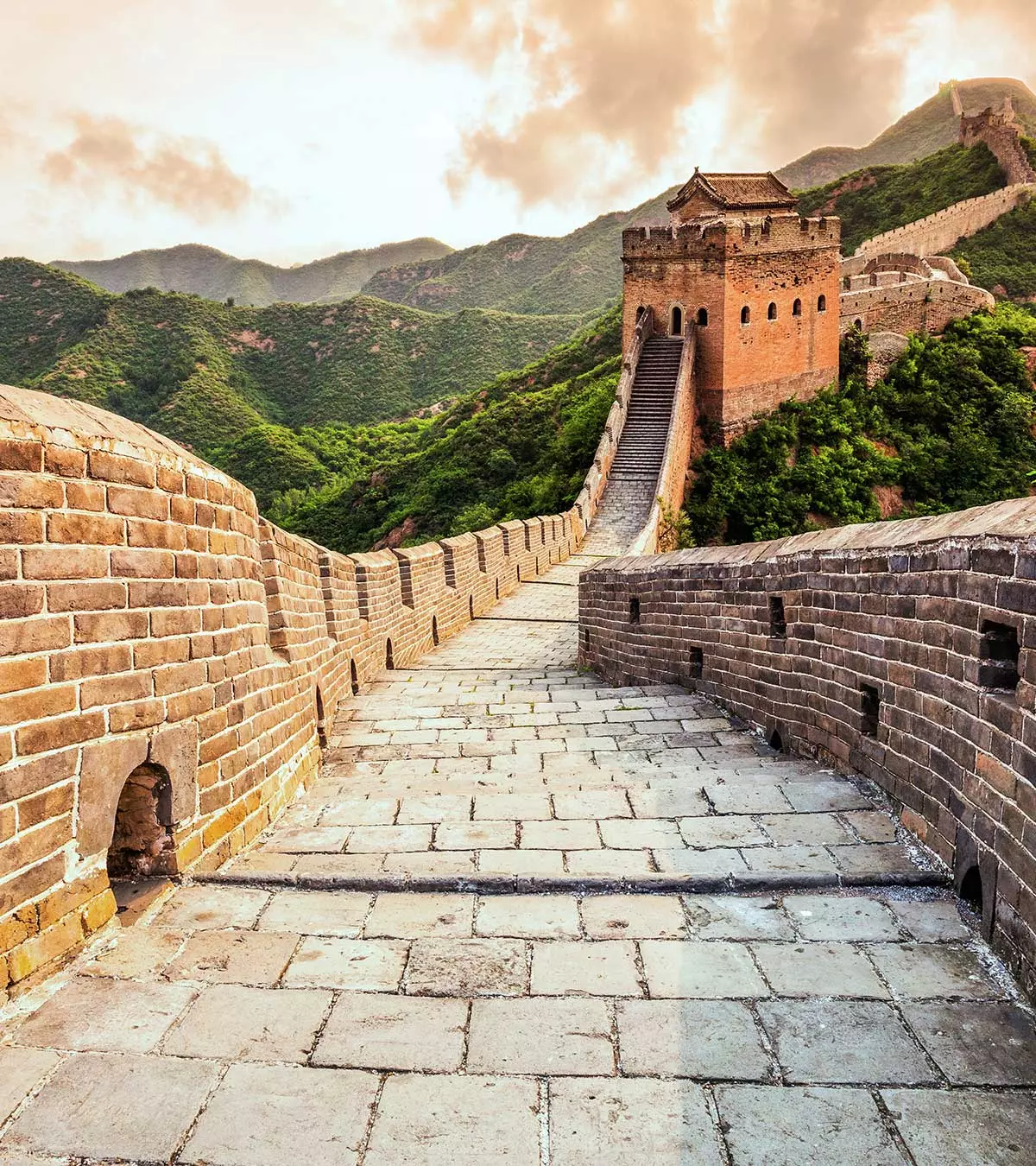
Image: ShutterStock
There are several interesting facts about the Great Wall of China for kids to learn. Did you know that the Great Wall of China, originally built for military purposes, stands witness to more than 2000 years of historical legacy? The majestic wall is the world’s largest human-made structure stretching more than 10 miles.

This post presents several interesting facts about the Great Wall of China for kids to learn, such as its fortifications, glorious past, how it came into existence, and what makes it count among the most visited tourist destinations globally.
Key Pointers
- The tallest section of the Great Wall of China is 14 meters (46 feet) from the ground.
- It was built for military purposes.
- At least one million workers were believed to have worked for building the Great Wall of China.
Fascinating Facts About The Great Wall Of China
This modern wonder is considered one of the largest construction projects the world has ever seen. Read on to discover the most interesting facts about the Great Wall of China.
1. How long is the Great Wall of China?
The total length of the Great Wall is 21,196 kilometers, which is about 13,171 miles or 834,514,560 inches.
2. How tall is the Great Wall of China?
The average height of the Great Wall of China is 6-7 meters (20-23 feet).
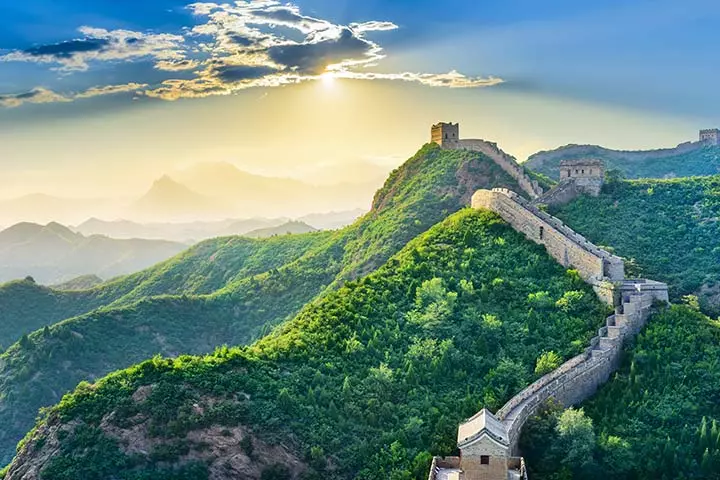
3. What is the tallest point on the Great Wall of China?
The tallest section of the Great Wall is 14 meters (46 feet) from the ground.
4. How wide is the Great Wall of China?
The average width of the top walking area of the Great Wall is 4-5 meters (13-16 feet).
5. When was the Great Wall of China built?
The construction of the Great Wall is said to have begun somewhere around 700 BC. Different dynasties expanded the wall through their reign. The combined age of the Great Wall is 2,300 years.
6. Why was the Great Wall of China built?
The Great Wall of China was built for military purposes. The insurmountable wall barrier made it nearly impossible for invaders to penetrate the heartland of China. The Great Wall is not a single wall, but a series of disjointed walls built by different rulers for defense.
The wall built during the reign of the Ming dynasty is the most grandiose. The Ming dynasty wall is the one that has significantly stayed intact and is the most popular spot for tourists.
7. How many years did it take to build the Great Wall of China?
Several dynasties built, re-built, and expanded on the existing sections of the Great Wall over a period spanning 2000 years, to give the wall its current form.
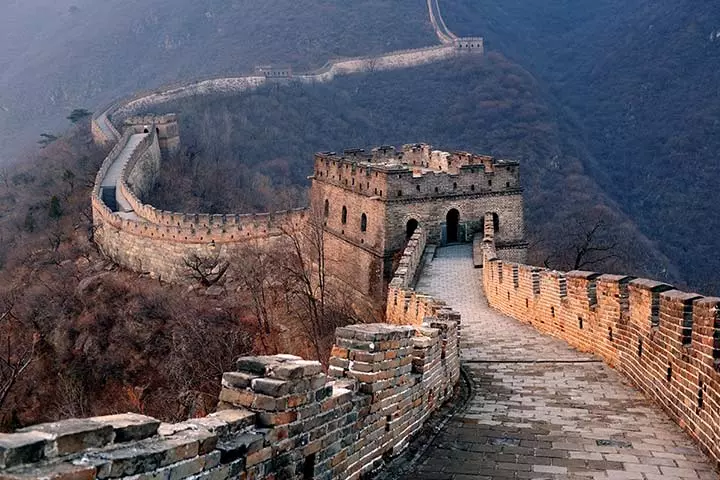
8. How many people built the Great Wall of China?
In its 2,000 years of history, at least a million workers are said to have worked on making the Great Wall.
9. Who built the Great Wall of China?
The person who is mostly credited for commissioning the Great Wall is emperor Qin Shi Huang of the Qin dynasty. He built the wall to protect the kingdom from the nomadic invaders from the north. It is speculated though, that the walls could be older than the Qin dynasty, and built by unknown rulers. Qin probably was the first who rebuilt and unified the walls to make them stronger.
10. How many rulers made the Great Wall?
The Qin, Han, Wei, Qi, Sui, Liao, Jin, and the Ming dynasties did significant work on the Great Wall.
11. Which ruler built most of the Great Wall?
The rulers of the Ming dynasty built most of the visible and popular sections of the Great Wall of China.
12. Where does the Great Wall of China start and end?
The Great Wall begins at the Jiayuguan Pass in the west and ends at the Shanhai Pass at the east. These are the start and finish points of the major Great Wall section built by the Ming dynasty.
 Did you know?
Did you know?
13. When did the construction of the Great Wall of China end?
The construction stopped in the year 1644, with the fall of the Ming dynasty.
14. How many steps are there on the Great Wall of China?
There is no fixed number of the steps. The first section, “Stairway to heaven” alone has 700 steps. When one puts together the total steps found across the Great Wall, the number could be in thousands or even tens of thousands.
A mother of three writes about her family trip to the Great Wall of China. She says, “At the bottom, we have three choices for getting up to the wall. Walk up the footpath with 4000+ steps for 30-40 minutes, ride the enclosed cable car up to Tower 14 with option for return ticket down, or ride the chair lift up to Tower 6 which includes a toboggan ride down… We decide on the chair lift and hop on.
“While the restored Mutianyu section of the Great Wall has a mostly smooth walking surface, there are still stair steps as it follows the ridgeline up and down. Lots and lots of steps. Merely getting from Tower 19 to Tower 20 involves 450 steps. In other words, don’t bother bringing a stroller for your little one (i).”
15. Is the Great Wall of China visible from space?
No! It is a common misconception that the Great Wall is visible from space or the moon. Some space agencies and astronauts have claimed that the Great Wall is visible from an altitude of 160-320 km (100-200 miles). However, not many have been able to see the wall with the naked eye. Only low orbiting satellites with high-sensitivity cameras have been able to capture the images of the Great Wall.
More Amazing Facts About The Great Wall Of China
- The Chinese name for the Great Wall of China is Changcheng, which means “Long Wall”.
- It is said that about one-third of the Great Wall is in ruins and only a few remains of this wall stay today.
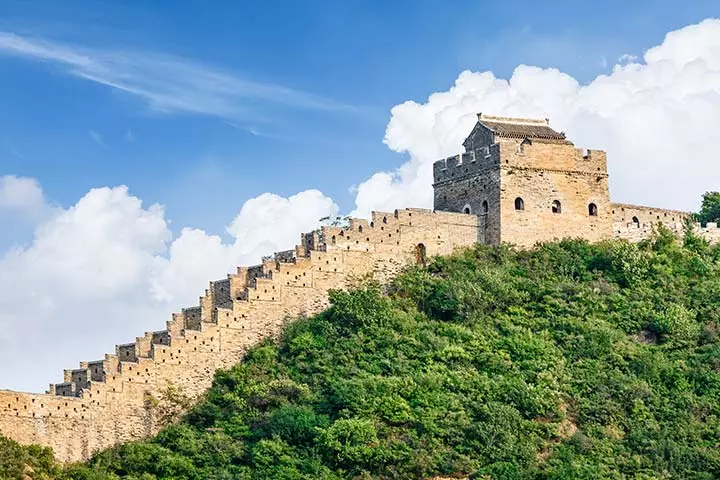
- About 22% of the Ming Great Wall has disappeared. These sections quite likely fell to vandalism where people stole the rocks from the wall to sell them or used the rocks to build their houses.
- UNESCO recognized the Great Wall of China as a World Heritage Site in the year 1987.
- There was no cement or sand used to bind the blocks of rock and bricks, which are part of the Great Wall. Instead, the workers used a batter made of rice flour. Workers spread the sticky, glutinous mix of rice and placed bricks on top of it to bind them all together.
 Quick fact
Quick fact- The Great Wall gets about 10 million domestic & international visitors each year.

- The wall has watch towers at several points, which in the past allowed guards to have a full field of view during patrols. During skirmishes with enemies, archers could fire arrows from the guard towers.
- The Ming dynasty built over 1,000 watchtowers across the Great Wall to position guards on the lookout for the enemy.
- It was quite common during the Ming dynasty to send criminal convicts to work as labor for the construction of the Great Wall.
- The Badaling section is the most visited part of the Great Wall. It is also the point where the wall is at its highest, at about a kilometer above sea level.

- The Badaling section is among the most well-preserved sections of the wall. It is also the part that first opened to the tourists.
- The national interest in the Great Wall increased during the early 20th century when foreign visitors to the wall increased.
- The oldest part of the Great Wall of China is the one located in the state of Qi. This wall section is said to have been constructed in ancient times, somewhere between 600-700 BC.
- The original intent of the wall was to defend against the nomadic tribes that came from northern Asia through passageways. Later, the wall was used for protection from the Mongols, who were a rising threat to the Chinese kingdoms.
- The great wall spreads over 15 regions of China: Beijing, Jilin, Shaanxi, Heilongjiang, Qinghai, Liaoning, Ningxia, Tianjin, Xinjiang, Henan, Inner Mongolia, Shandong, Gansu, Shanxi, and Hebei.
- The Great Wall ends in the sea at Shanhai pass at a point called Laolongtou, which stands for “Old Dragon Head.”

- The walls are lit up during the night but mostly at the sections popular with the tourists.
 Trivia
Trivia- Several parts of the Great Wall are facing severe decay. These parts could erode, and the wall may disappear in the next couple of decades.
- The cultural revolution of China from the mid-1960s to the mid-1970s saw a surge in the number of people looting rocks and bricks from the Great Wall to build their homes. Now, however, removing a brick or a stone from the Great Wall is prohibited.
- The Jiankou section is the steepest part of the Great Wall. It is also considered as one of the riskiest parts of the wall since the tiles are not restored and the ground is abundant with wild plants. However, the risk involved brings a fair amount of thrill, which makes the Jiankou section a favorite among trekkers and adventure seekers.
- The second Sino-Japanese war between China and Japan was fought during the late 1930s near the Great Wall. It is said that certain sections of the wall still have bullet holes from the war.
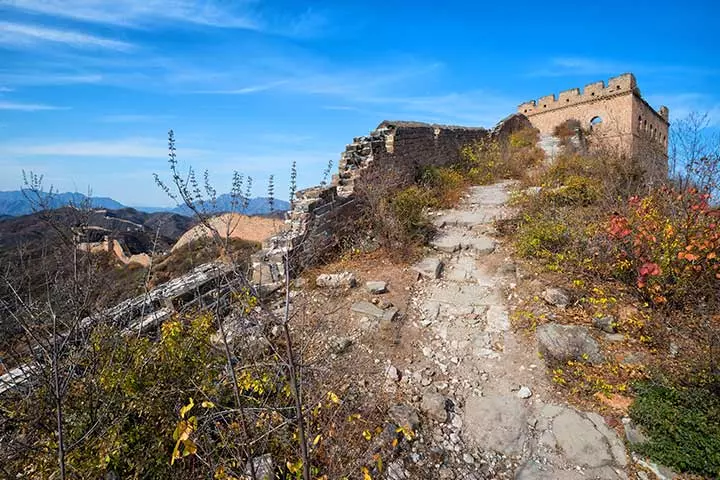
- The Ming dynasty wall measures 5,500 miles (8851 kilometers).
- Over 300 heads of states and VIPS have visited the Great Wall. Most visit the well-preserved section of the wall at Badaling. In 1972, President Nixon of the United States visited this section, which increased the interest towards the Great Wall among American tourists. Former British Prime Minister Margaret Thatcher also visited the Badaling part of the wall when visiting the Great Wall.
- There are watch holes and shooting holes in the wall, which allowed archers to shoot at the enemies strategically.
- Certain sections of the wall are wider and have different blocks on the floor. These sections were used for soldiers to patrol on a horse. About four horses could fit side by side at some points on the wall.
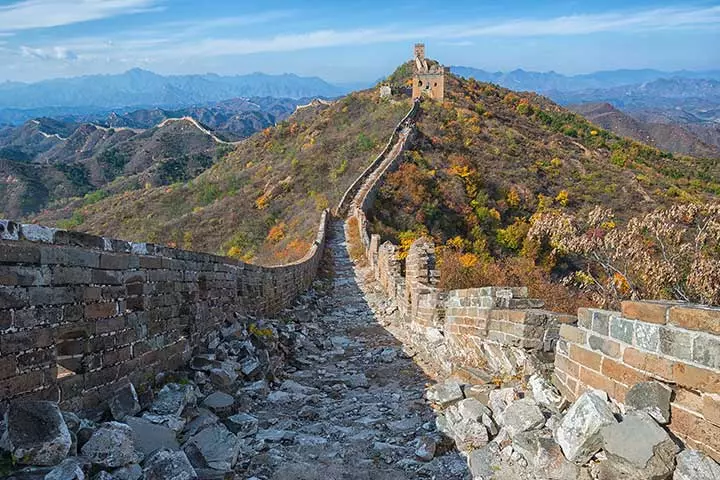
- It is said that several workers died during the making of the wall, which brought the wall a nickname “The longest cemetery in the world.”
- There were no strict government regulations to protect the Great Wall until the year 2006.
- A section of the Great Wall extends close to the China-North Korea border. Historians believe that the wall extended into North Korea in antiquity.

- New sections of the Great Wall are still discovered, and the latest finding of an unknown section was in the year 2012.
- The Great Wall eventually did little to defend the Ming dynasty. The Manchu dynasty crossed the Great Wall and laid conquest on Beijing in the mid 17th century, thus marking the end of the Ming dynasty.
Frequently Asked Questions
1. Why is the Great Wall of China famous?
The Great Wall of China is famous as one of the seven construction wonders of the world. Further, it is also a historical site where multiple battles were fought between the Chinese and various people.
2. Why is the Great Wall of China a 7th wonder?
The Great Wall was declared one of the New Seven Wonders of the World because UNESCO acknowledged it as the largest man-made structure on Earth. Various materials such as rammed earth, wood, brick, and stone have been used to build this structure. If your child is curious to learn more about it and the other six wonders, tell them some facts about the seven wonders of the world for kids.
3. How many bricks are in the Great Wall of China?
While some courses say approximately 3,873,000,000 bricks were used to build the Great Wall Of China, the exact number of bricks is yet to be determined.
4. Is the Great Wall hollow?
No, it is not a hollow structure. If it was hollow, music wouldn’t have been used as a defensive structure.
5. Who broke the Great Wall of China?
The founder of the Mongol Empire, Genghis Khan (1162-1227) was the only person who led his Mongolian army to break through the Great Wall of China multiple times.
The Great Wall of China is always an impressive, exciting, and engaging subject for children because of its historical legacy of over 2000 years. The Great Wall of China, which was originally built for military and defense purposes, was designated as a UNESCO World Heritage Site in 1987. The wall has stood the test of time and offers us a fascinating glimpse into our past and the rich history of human civilization. Hence, it is critical to preserve such historical monuments and pass on the knowledge to future generations.
Infographic: Other Tourist Attractions In China
China is known for its diverse landscape, spectacular nature spots, and lip-smacking cuisine. If you plan to visit this popular tourist destination, our infographic could help you pick the most famous places to visit. You may take a screenshot to save it or share it with other travel enthusiasts. Illustration: Momjunction Design Team
Illustration: Interesting Great Wall of China Facts for Kids

Image: Stable Diffusion/MomJunction Design Team
Embark on a fascinating journey through time with this informative video exploring the captivating history of the Great Wall of China, perfect for curious young minds eager to learn!
Personal Experience: Source
MomJunction articles include first-hand experiences to provide you with better insights through real-life narratives. Here are the sources of personal accounts referenced in this article.
i. Great Wall of China Toboggan Ride.https://malaysianmeanders.blogspot.com/2014/03/great-wall-of-china-toboggan-ride.html
Community Experiences
Join the conversation and become a part of our nurturing community! Share your stories, experiences, and insights to connect with fellow parents.
Read full bio of Elisa Yi
Read full bio of Sravani Rebbapragada
Read full bio of Harshita Makvana
Read full bio of Praggya Joshi










